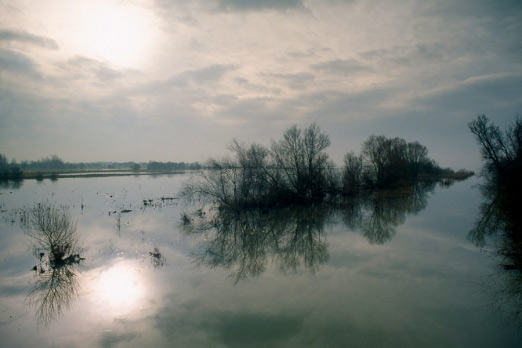
Ouse Washes, Cambridgeshire
We strive to protect the countryside from unnecessary built-development by encouraging planning authorities to use previously-developed land before greenfield sites.
We scrutinise and comment on local, regional and district-wide planning documents. We examine individual planning applications which affect the countryside (e.g. large housing schemes – free standing new settlements or urban extensions, windfarms, and new roads or widened roads such as the A14).
The Campaign to Protect Rural England (CPRE), founded in 1926, is one of the earliest campaigning environmental charities. It owes its inspiration to the passion of John Ruskin for the social benefits of beauty, whether in the natural world or in arts and crafts. He heavily influenced the Wisbech, Cambridgeshire-born Octavia Hill, co-founder of the National Trust in 1894, and the early CPRE pioneers such as Clough Williams-Ellis and Ethel Haythornthwaite.
The Council for the Preservation of Rural England, as CPRE was originally called, was established to campaign against threats to the countryside, particularly against “ribbon developments” of housing along road and rail routes. History has shown that this concern was justified, leading to the building of bypasses and what was dubbed “urban sprawl”. After World War II, CPRE’s campaigning helped lead to the Town and Country Planning Act 1947 and the National Parks and Access to the Countryside Act 1949. That we have a beautiful natural environment today is largely attributable to these two visionary Acts. Instead of “ribbon developments”, the planning system established green belts, new towns, planned suburbs and garden cities, and gave us the legal and planning tools to safeguard natural beauty.
CPRE’s name was changed in 1969 to The Council for the Protection of Rural England, and then again in 2003 to The Campaign to Protect Rural England. At the start of 2020, the name was changed once more - to CPRE, the countryside charity. We have a new strategy for the next six years up to our centenary, and aim to involve a million people in speaking up for the countryside through three main areas: connecting people with the countryside, promoting rural life, and empowering communities to improve and protect their local environment.
CPRE has influenced Government policy in many aspects of countryside protection, including:
- 1985 - reform of the EC's Agricultural Structures Directive stopped funding for many damaging agricultural activities and secured the first “green” farm payments
- 1988 - scrapping of tax incentives favouring blanket conifer plantations in scenic areas
- 1990 - the Government's first ever Environment White Paper accepted the case for hedgerow protection
- 2020 - a Deposit Return Scheme for single-use drink-containers has been included in the Environment Bill for future consultation
Our campaigns are many and diverse, including:
- Reform of the Common Agricultural Policy
- Recognition for the work done by farmers to protect the character of the countryside
- Protection of green belts
- Preferred use of brownfield sites over greenfield in new developments
- Helping communities with advice on supporting or challenging a planning application
- Opposing opencast mining, fracking, and wind farms
- Proposing solutions to energy problems
- Modifying HS2 rail plans to remove all planned out-of-town interchange ("parkway") stations
- Challenging the potential Oxford to Cambridge Expressway
- Producing “tranquillity” maps and tools for use by local and regional planners, which show the diminishing areas of the countryside not disturbed by man-made noise, visual intrusion or light pollution
- Promoting affordable housing in rural areas
- Reducing unnecessary road signs and advertising billboards in the countryside
- Protecting hedgerows
- Reducing litter in rural areas
- Support for local food businesses, including 'Mapping Local Food Webs' (2007–2012)
- Launching Star Count 2013, a campaign to reduce light pollution
- Supporting small farmers
Despite many successes, the reality is that our countryside is under unprecedented threats - making the work of CPRE, the countryside charity, more vital than ever before.
We all deserve a thriving countryside, decent affordable housing, and effective transport links and services. Why not JOIN US today to help protect what we have and build a more beautiful and sustainable Cambridgeshire and Peterborough?
For more information on the CPRE national organisation: www.cpre.org.uk
CPRE’s help for communities facing a planning application is here: www.cpre.org.uk/what-we-care-about/better-places-to-live/what-gets-built-and-where/key-planning-help-resources/
CPRE's interactive maps of England’s light pollution and dark skies are here: https://www.cpre.org.uk/what-we-care-about/nature-and-landscapes/dark-skies/englands-light-pollution-dark-skies-map/
To help take action on a local litter problem, see: https://www.keepbritaintidy.org/

